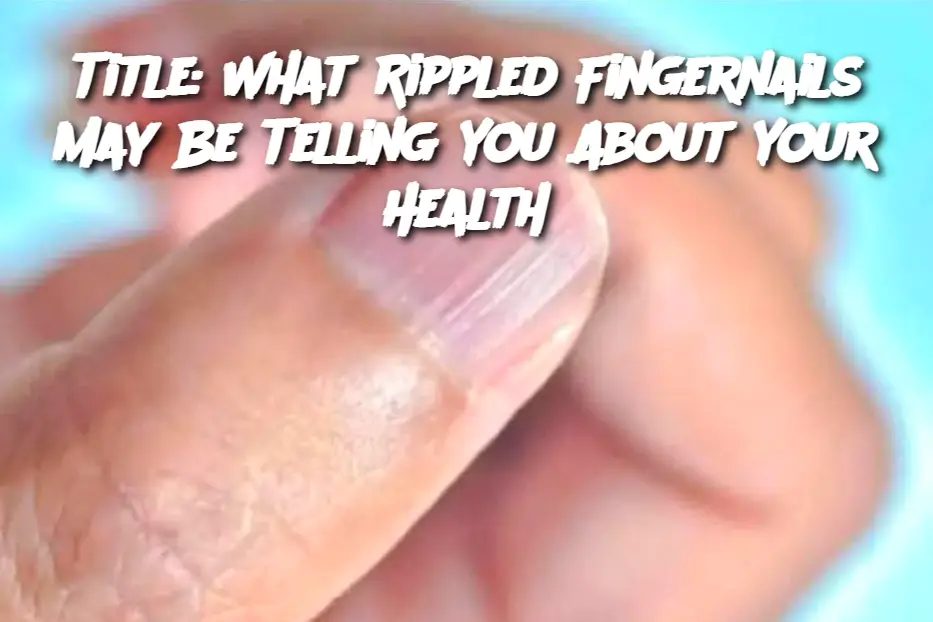-
Examine the Ridges:
-
Vertical ridges (running from cuticle to tip) are often harmless and can occur with age.
-
Horizontal ridges (Beau’s lines) or pitting (small dents) are more concerning and may warrant medical attention.
-
-
Assess Other Symptoms:
-
Do your nails break easily? Are they discolored or brittle? Accompanying symptoms like fatigue, hair loss, or joint pain can help narrow down the cause.
-
-
Adjust Your Diet:
-
Ensure you’re consuming nutrient-rich foods like leafy greens, eggs, lean protein, and whole grains. Deficiencies in iron, zinc, or biotin often show up in the nails.
-
-
Practice Gentle Nail Care:
-
Avoid harsh chemicals, excessive filing, or biting your nails. Keep your hands moisturized, and use nail-strengthening oils like vitamin E or jojoba oil.
-
-
Consult a Healthcare Professional:
-
If changes in your nails are sudden, persistent, or accompanied by other symptoms, consult a dermatologist or doctor for a thorough evaluation.
-
Serving and Storage Tips (Maintaining Nail Health):
-
Keep Nails Clean and Dry: Prevent infections by maintaining good hygiene and avoiding prolonged exposure to water.
-
Moisturize Regularly: Use hand creams or cuticle oils daily, especially in dry or cold climates.
-
Limit Use of Nail Hardeners or Acrylics: These can weaken nails over time and may mask signs of underlying conditions.
-
Use Gentle Nail Products: Choose acetone-free polish removers and chemical-free nail polish when possible.
Variants (Types of Nail Ridges and What They Might Mean):
-
Vertical Ridges: Often a natural part of aging but can indicate dehydration or vitamin deficiencies if they become pronounced.
-
Horizontal Ridges (Beau’s Lines): May signal a disruption in nail growth due to illness, fever, or trauma.
-
Nail Pitting: Tiny dents may point to psoriasis, eczema, or autoimmune disorders.
-
Spoon-Shaped Nails (Koilonychia): Can be a sign of iron-deficiency anemia.
-
Discoloration with Ridges: Yellow or brown hues could signal fungal infection or respiratory issues.
FAQ:
Q: Are ridged nails always a sign of disease?
A: Not necessarily. Mild vertical ridges are common with age. However, deep or unusual ridging—especially horizontal—may indicate an underlying health issue.
Q: Can diet really affect my nails?
A: Absolutely. Nutritional deficiencies, especially in iron, zinc, and B-complex vitamins, can lead to changes in nail texture, strength, and appearance.
Q: How can I tell if my nail ridges are normal?
A: Normal ridges are typically vertical and subtle. If ridges are deep, change suddenly, or are accompanied by discoloration or nail deformities, consult a healthcare provider.
Q: Can nail pitting be reversed?
A: Nail pitting due to chronic conditions like psoriasis may not be reversible, but proper treatment can help reduce further damage and improve nail health.
Q: Should I see a doctor for rippled nails alone?
A: If ripples or ridges are accompanied by other symptoms (fatigue, hair loss, pain), or if they appeared suddenly and noticeably, it’s wise to get a medical opinion.
Conclusion:
Rippled fingernails are more than a cosmetic quirk—they can be subtle messengers of what’s going on inside your body. Paying attention to your nails and adopting healthy habits may not only improve their appearance but also lead to early detection of deeper issues. When in doubt, let your nails speak—and listen closely
